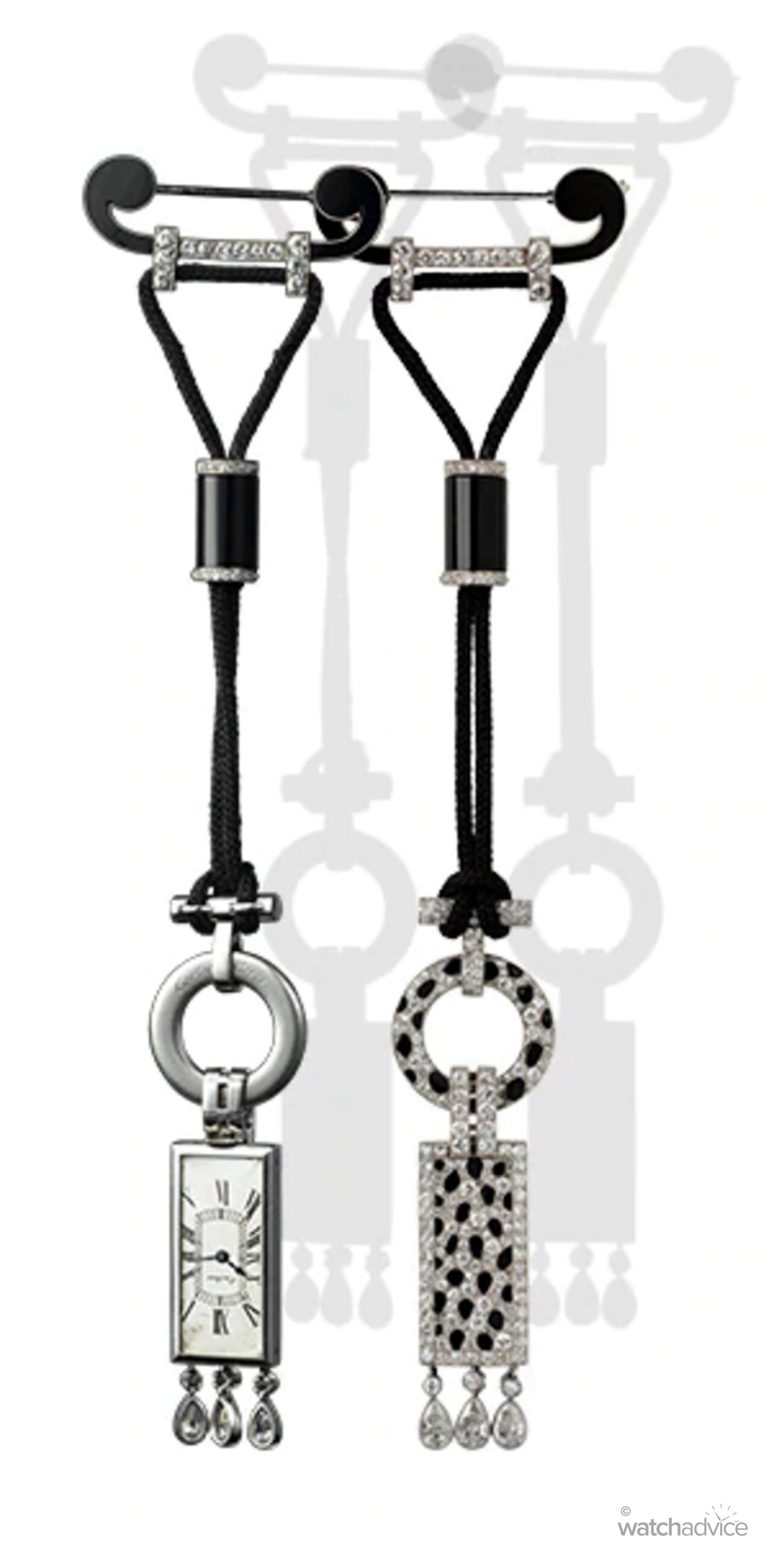While Cartier’s catalogue is filled with standout timepieces, the Panthère has always been one of the most mysterious timepieces in the Parisian brand’s lineup. How did this come to be?
This article is written in collaboration with Cartier
Oftentimes, watches become associated with the forces that wield them. The role that individuals like Steve McQueen, Paul Newman, and Princess Diana can play — whether consciously or not — can be essential in forging a timepiece’s identity. A watch, after all, is more than metal and movement; it’s a reflection of who wears it and what they represent.
Perhaps no brand understands this better than Cartier, whose contributions to the watch world have left an indelible mark on the industry’s history. Seminal collections like the Tank and Santos have graced the wrists of movie stars, royalty, and cultural icons alike — becoming as much a part of their legacy as their work. However, neither watch has been able to meld with one’s identity, to slip into any role with effortless elegance and style, quite like the Cartier Panthère can. So, what prompted the creation of this timepiece? And how has it been able to so quietly rise through the ranks of culture and power to become a symbol of understated sophistication?
The Panther & the Lady
The year is 1914: Cartier is celebrating its 67th anniversary, and Louis-Joseph Cartier — grandson of founder Louis-François — is at the helm of the company. It’s a transitional moment for Cartier, horologically speaking: ten years removed from its pioneering entry into watchmaking with the release of the Santos, yet still a few years away from unveiling the emblematic Tank at the close of World War I.
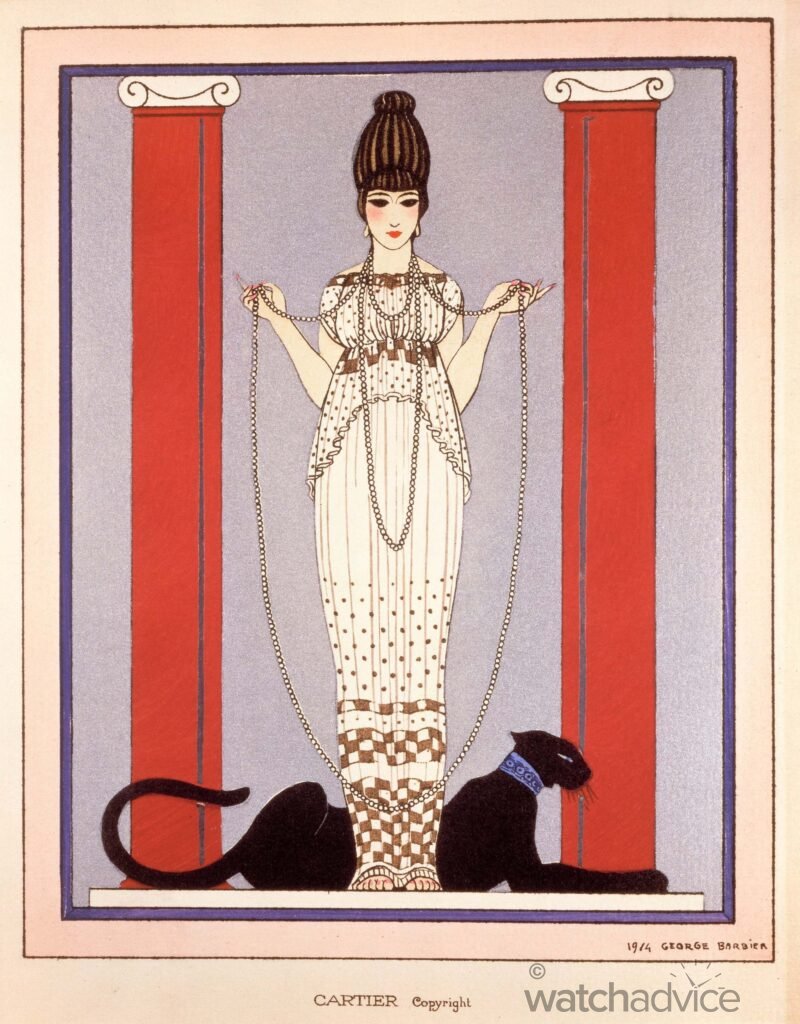
La Dame à la Panthère (Lady with a Panther), 1914
This painting, commissioned by Louis-Joseph Cartier from George Barbier, became one of the first uses of the Panther in Cartier’s history.
By this time, however, Cartier had already achieved global acclaim in the world of high jewellery. That same year, they would send out invitations to an exclusive jewellery exhibition — an event that quietly marked the debut of one of Cartier’s most enduring symbols: the panther. Louis-Joseph commissioned an illustration from the prolific French artist George Barbier, entitled La Dame à la Panthère (Lady with a Panther). It was the first time the creature appeared as part of Cartier’s visual language. But what inspired Louis-Joseph to choose such an animal?
Characteristically, it was an inspired decision — one that aligned perfectly with Cartier’s evolving identity. The panther was elegant, graceful, and powerful when it needed to be — much like Cartier’s own creations. And while Louis-Joseph’s personal fascination with exotic animals may offer one explanation, the true linchpin wasn’t the panther itself, but rather the lady: Jeanne Toussaint.
Jeanne Toussaint (1887-1976)
Despite not even knowing how to draw at the beginning of her employment, Toussaint would evolve quickly to become a legendary individual in Cartier’s history, succeeding Louis-Joseph as head of design in 1933.
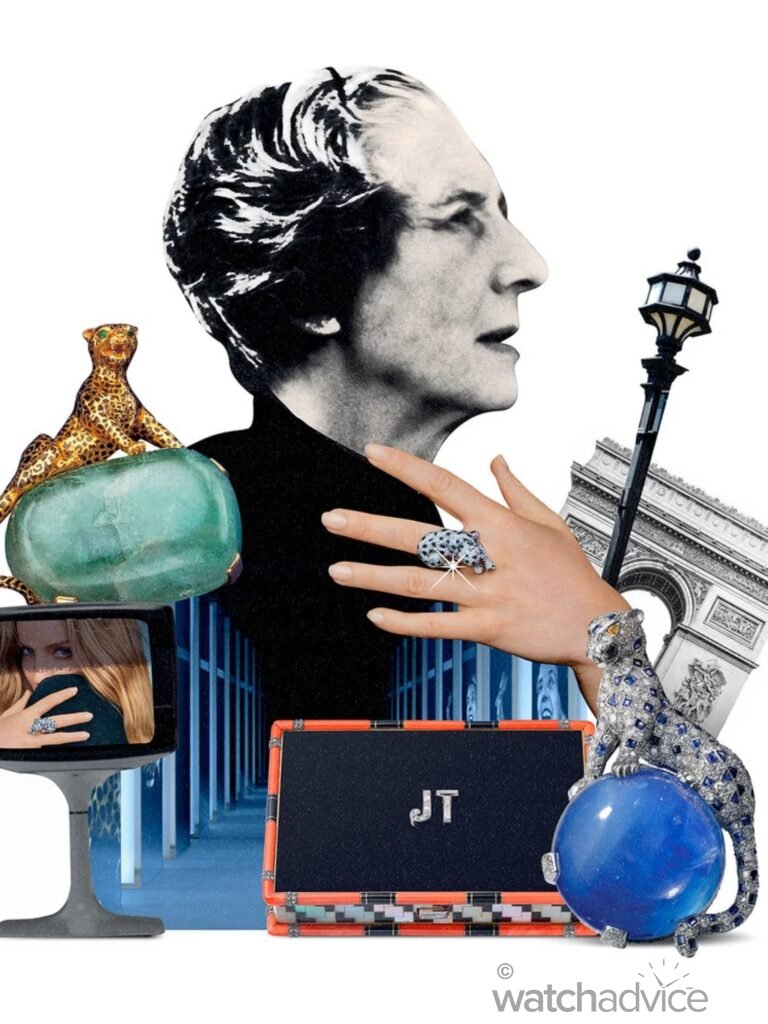
Born in Belgium, Toussaint moved to Paris following her father’s death, eventually embedding herself in the heart of French society. It was there she crossed paths with figures like George Barbier and a then-rising Gabrielle ‘Coco’ Chanel. But her journey through the worlds of fashion, jewellery, and watchmaking would truly begin after an introduction to Louis-Joseph Cartier. Captivated by her sharp sense of style — and her own obsession with the panther — Louis-Joseph brought her into the company to help shape Cartier’s accessory line.
It was Toussaint who elevated the panther from brief motif to enduring symbol. Her influence permeated Cartier’s design language, ultimately leading to the release of the first timepiece we might consider the precursor to the modern Panthère. Unlike the Tank or Santos — whose designs have remained fairly faithful to their original forms — Toussaint’s creation was something else entirely: a dazzling onyx-and-diamond piece, arranged in a striking pattern that echoed the sleek, spotted fur of its namesake. From that moment on, her visionary designs — and the determined, refined persona behind them — became a cornerstone of Cartier’s identity.
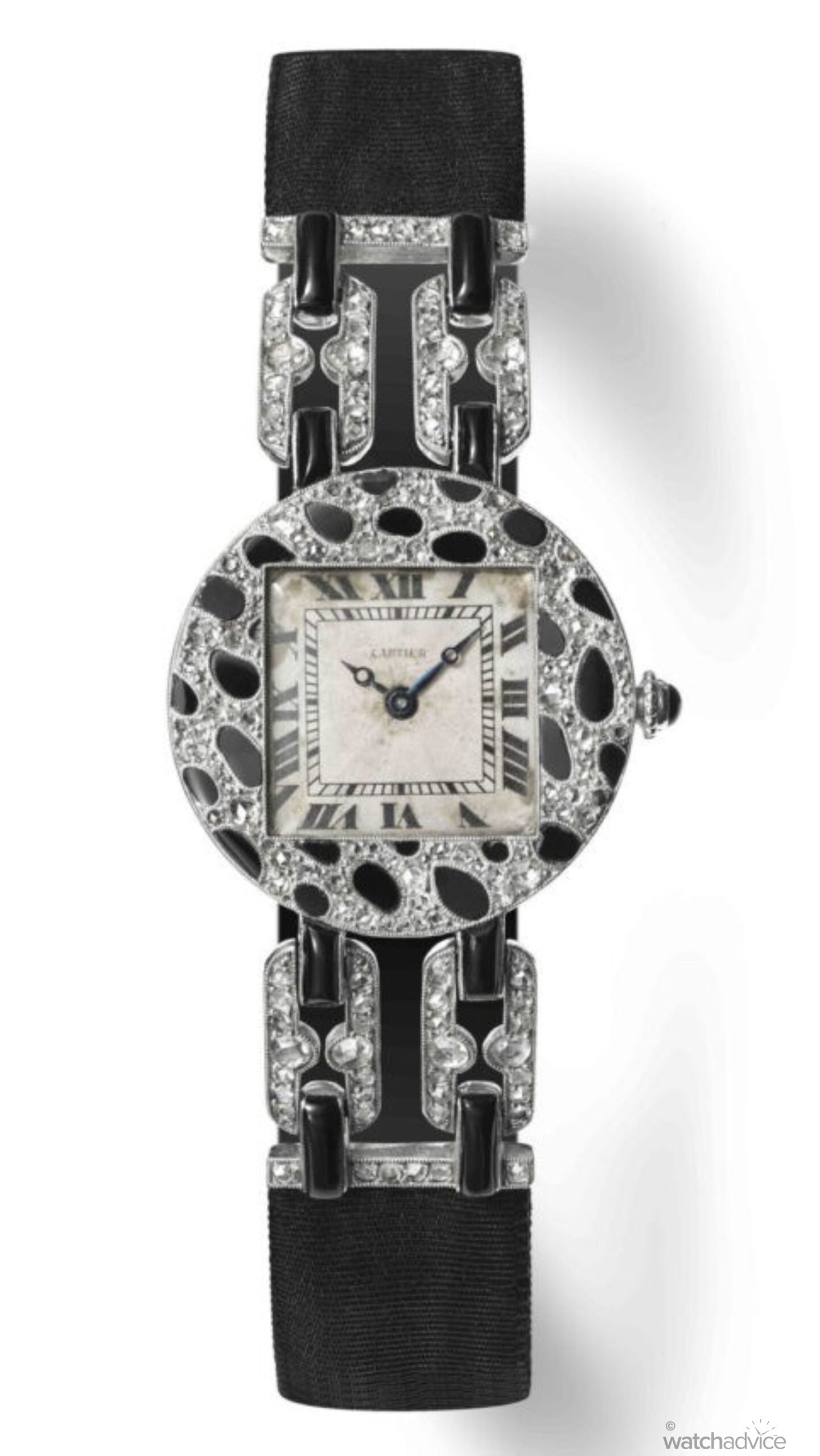
Over the years, Louis-Joseph and Jeanne forged an enduring partnership, both professionally and personally. Their working relationship grew into a close friendship, and eventually into a romantic one. But their love story was ultimately cut short, as due to Toussaint’s family background, marriage was strictly forbidden. Still, the two remained in contact until Louis-Joseph’s death in 1942. Toussaint herself passed away in 1976, six years after retiring from Cartier.
Now, in 2025, we mark 49 years since her passing. Yet her legacy remains etched into the soul of Cartier. She was a rule-breaker, a tastemaker, and elegance personified — an icon whose vision helped define the house for generations to come. For these attributes, she will forever be remembered, but also through the affectionate nickname Louis-Joseph Cartier had for her: Ma petite panthère — ‘my little panther.’
The Evolution
Though Toussaint’s original reference marked one of the first depictions of the Panthère, the collection remained limited to a single watch for the first half of the 20th century. Over the years, the panther motif was more commonly utilised in the jewellery and accessories Cartier produced.
Whether in the form of brooches for the Duchess of Windsor or personalised commissions from remarkable individuals like Barbara Hutton and Daisy Fellowes, the panther and Cartier gradually became inseparable. Even today, the panther continues to appear throughout much of Cartier’s jewellery — an enduring emblem of elegance, power, and timeless style.
It wouldn’t be until the early 1980s that the watch world would be introduced to the more familiar silhouette of the Panthère de Cartier. As was common for the era, these timepieces were powered by the then-revolutionary quartz movement and were initially offered in three distinct variations: 18k white gold, yellow gold, and the ever-popular two-tone steel and gold combination. It wasn’t until 1991 that Cartier released an all-steel version of the Panthère de Cartier, a move that would go on to earn widespread praise. This iteration offered a more accessible entry point into the collection without compromising on Cartier’s hallmark craftsmanship.
Cartier Panthère de Cartier, circa 1990
Image: EITAUKTION GmbH
Early forms of the Panthère de Cartier would greatly inform the design language of all future models. Like many other Cartier collections, the brand seemed to have hit it out of the park on the first try.
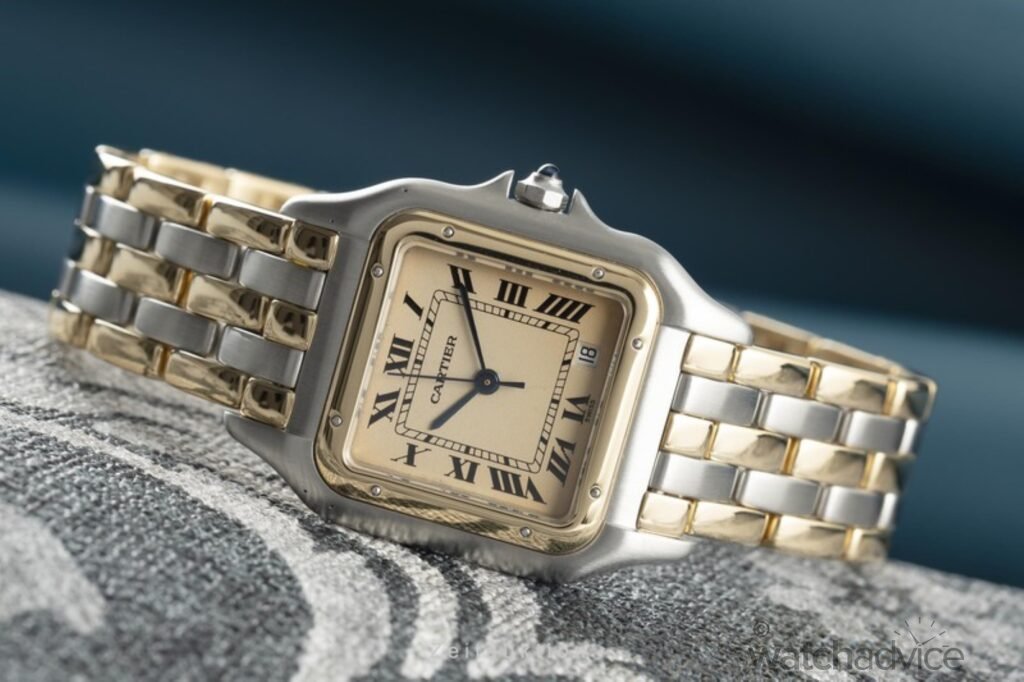
Unlike the designs of the early 20th century, the beastly inspiration behind the Panthère de Cartier was far more subtle. Rather than taking a literal approach, this timepiece took inspiration from the panther in a more idyllic sense, embodying the animal’s graceful nature. Its most defining feature was its flexible five-link bracelet — crafted to emulate the feline’s elegant movement with a fluidity that made it both practical and refined. The links were also highly polished, not only to catch the light but to echo the Panthère’s origins in fine jewellery — a seamless blend of haute joaillerie and haute horlogerie. In many ways, it became the first true jewellery watch.
It’s easy to spot, though, that the Panthère de Cartier shares several visual cues with its older sibling in the Santos. Both feature square cases, similarly contoured bezels, and exposed screws — styling traits that hint at a shared heritage. Yet, Cartier was careful to ensure the Panthère stood apart in its own right.
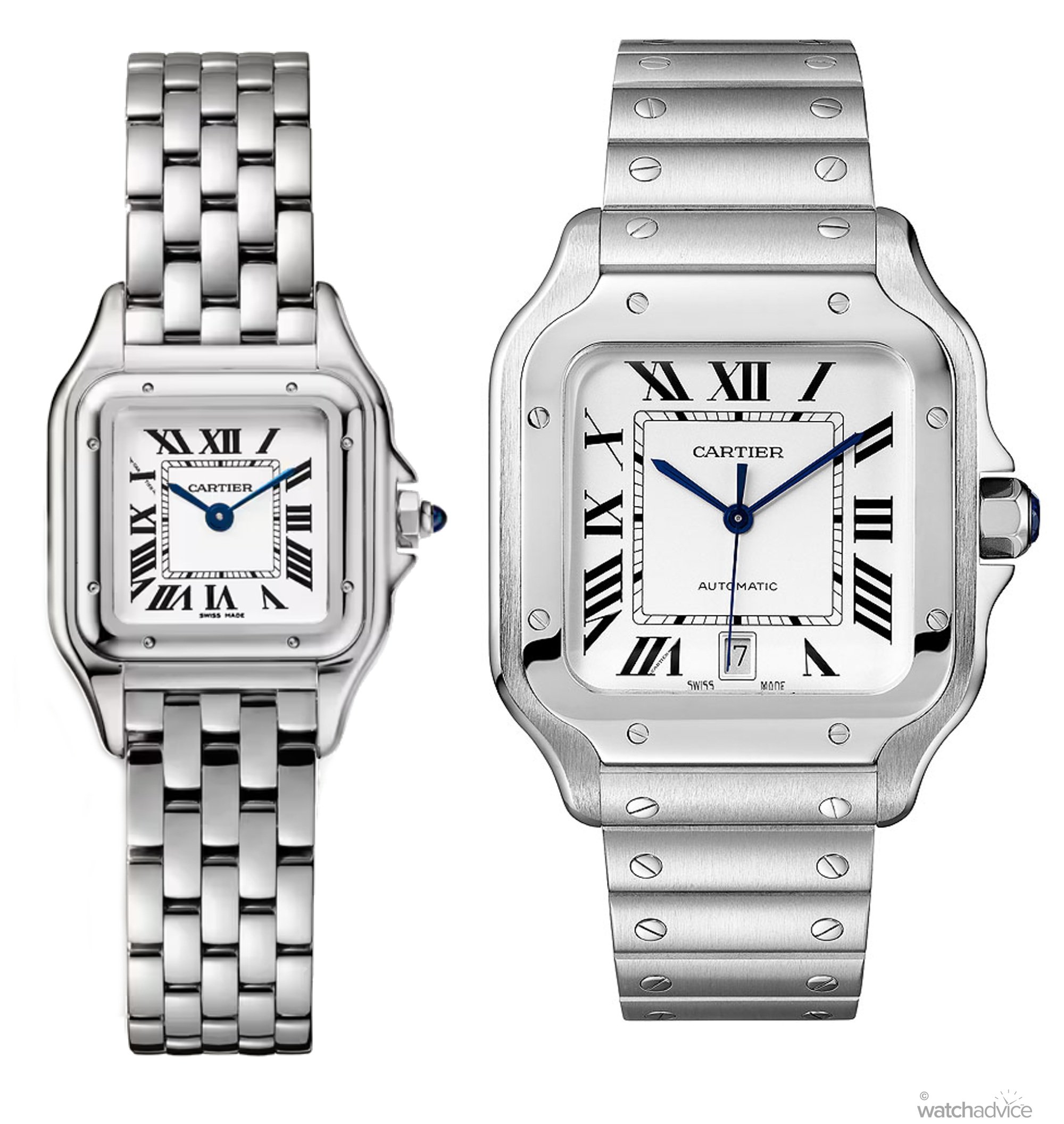
As opposed to the Santos, with its bold design features, the Panthere de Cartier pulls it back significantly. Its case is gently rounded rather than bevelled, and the screws on the bezel are proportionally smaller, lending a more refined feel. The watch is also considerably more delicate in scale — while the Santos pushes close to 40mm, even the largest Panthère model only reaches 31mm. The crown on the Panthère is also more in line with the traditional design language of the maison, opting for a blue spinel cabochon blended with the Santos’ heptagonal crown. Finally, the distinctive brick-lay bracelet doesn’t just enhance comfort and wearability; it encapsulates the quiet strength and grace the collection is known for.
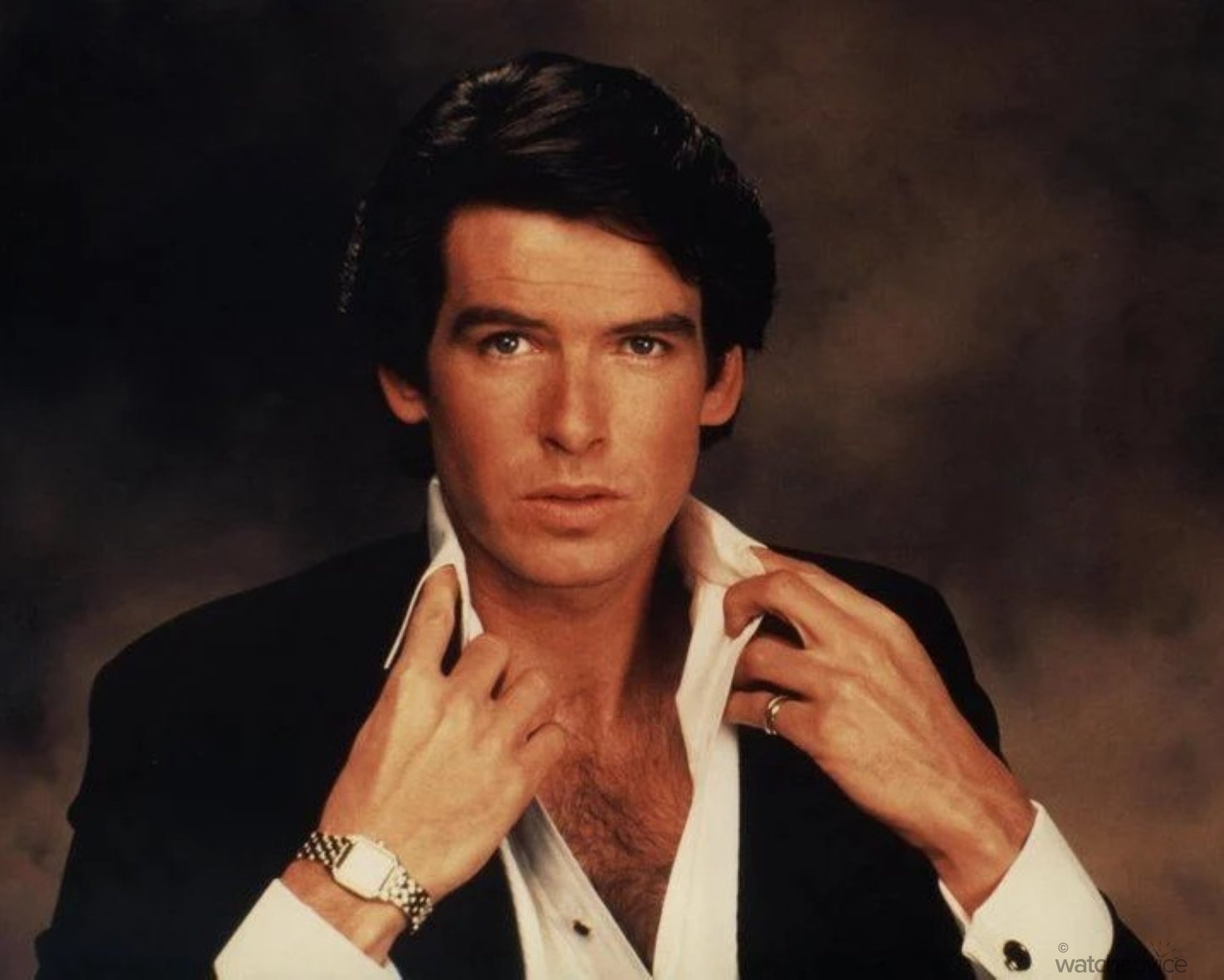
Given its versatility and elegance, it’s no surprise that the Panthère de Cartier quickly became a defining ‘it-girl’ watch of the 1980s and 90s. Coveted for its flexibility and understated glamour, it was seen on the wrists of fashion and cultural icons like Madonna, Princess Diana, and Jane Fonda.
That said, its appeal wasn’t limited to women. Men, too, found themselves drawn to its charm. Keith Richards of the Rolling Stones famously wore one, but perhaps the most recognisable male wearer of the time was Pierce Brosnan. Before he ever picked up a Walther PPK or donned the Omega Seamaster as James Bond, the Irish actor sported the Panthère de Cartier as Remington Steele in the titular television series, which ran from 1982 to 1987. On screen, Brosnan and the Panthère de Cartier would become inseparable.
The Panthère de Cartier remained a key part of the brand’s collection until it was eventually discontinued in 2004. Its absence was keenly felt, and demand for vintage models surged among Cartier enthusiasts. For many, its departure left a notable gap — not just in the brand’s offerings, but in the broader landscape of jewellery watches. Considering the Panthère’s pivotal role in pioneering that genre, its enduring allure is more than justified.
The Present & Future
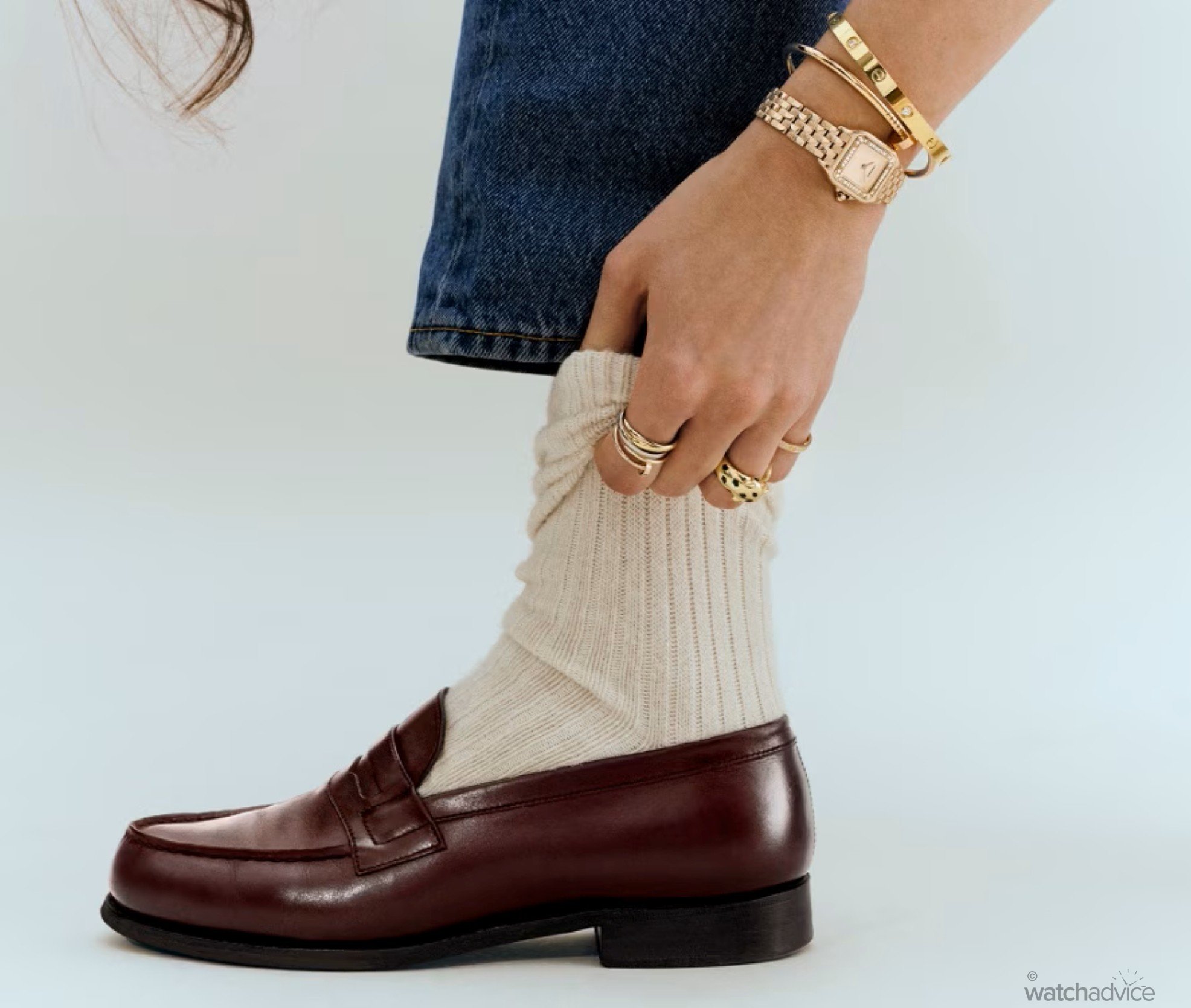
As you may have guessed, though, the story doesn’t quite end there. While Cartier fans across the globe lamented what many saw as a misstep by the Parisian maison, the absence of the Panthère de Cartier would linger for another thirteen long years. Eventually, Cartier recognised exactly what had been missing. In 2017, the brand announced a full-scale revival of the collection at that year’s Salon International de la Haute Horlogerie (SIHH) — now known as Watches and Wonders.
The news sent shockwaves through both Cartier’s loyal following and the broader watch industry. Competing jeweller-watchmakers were left scrambling, eager to respond to the triumphant return of what many considered the true monarch —king or queen, take your pick — of the jewellery watch genre.
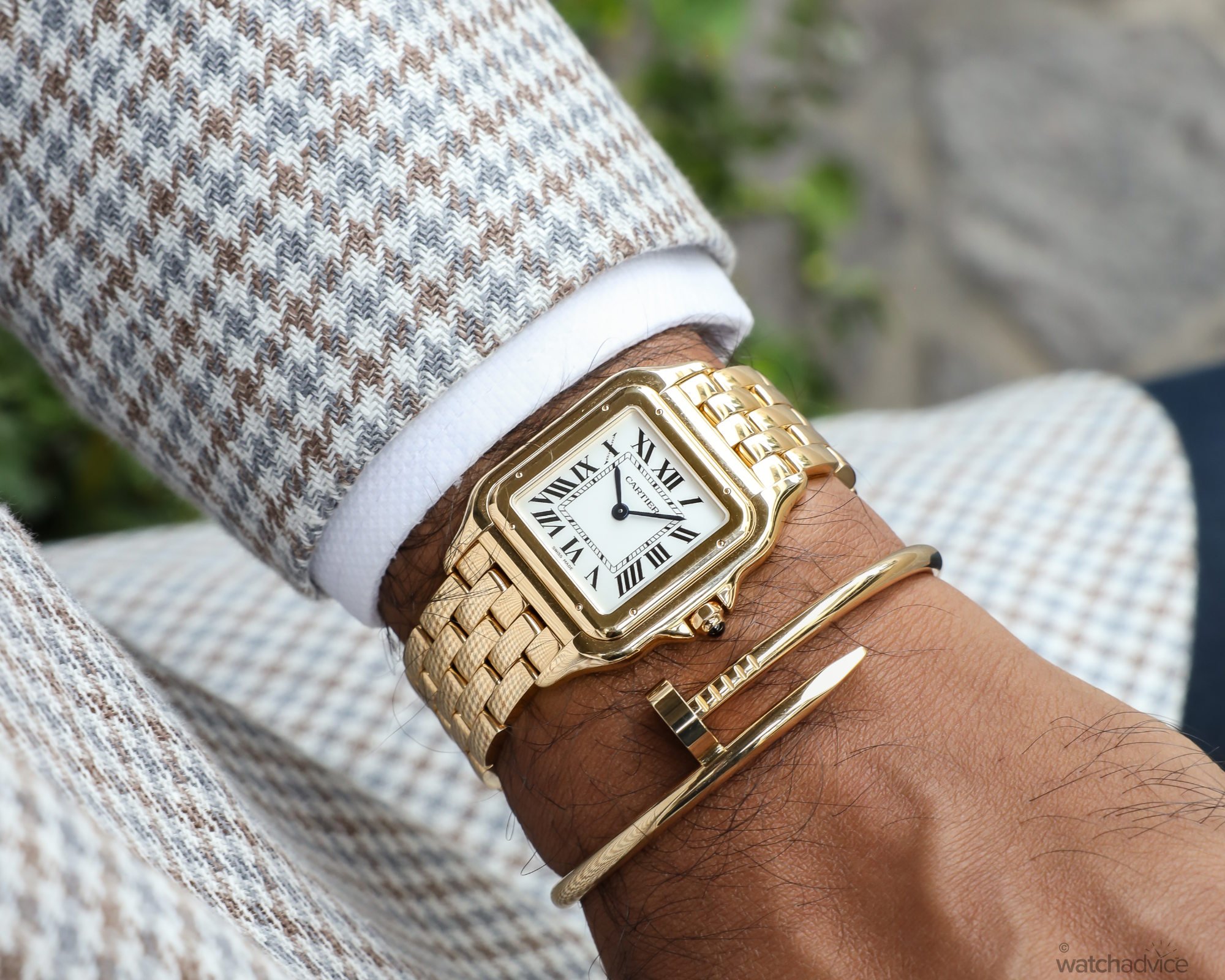
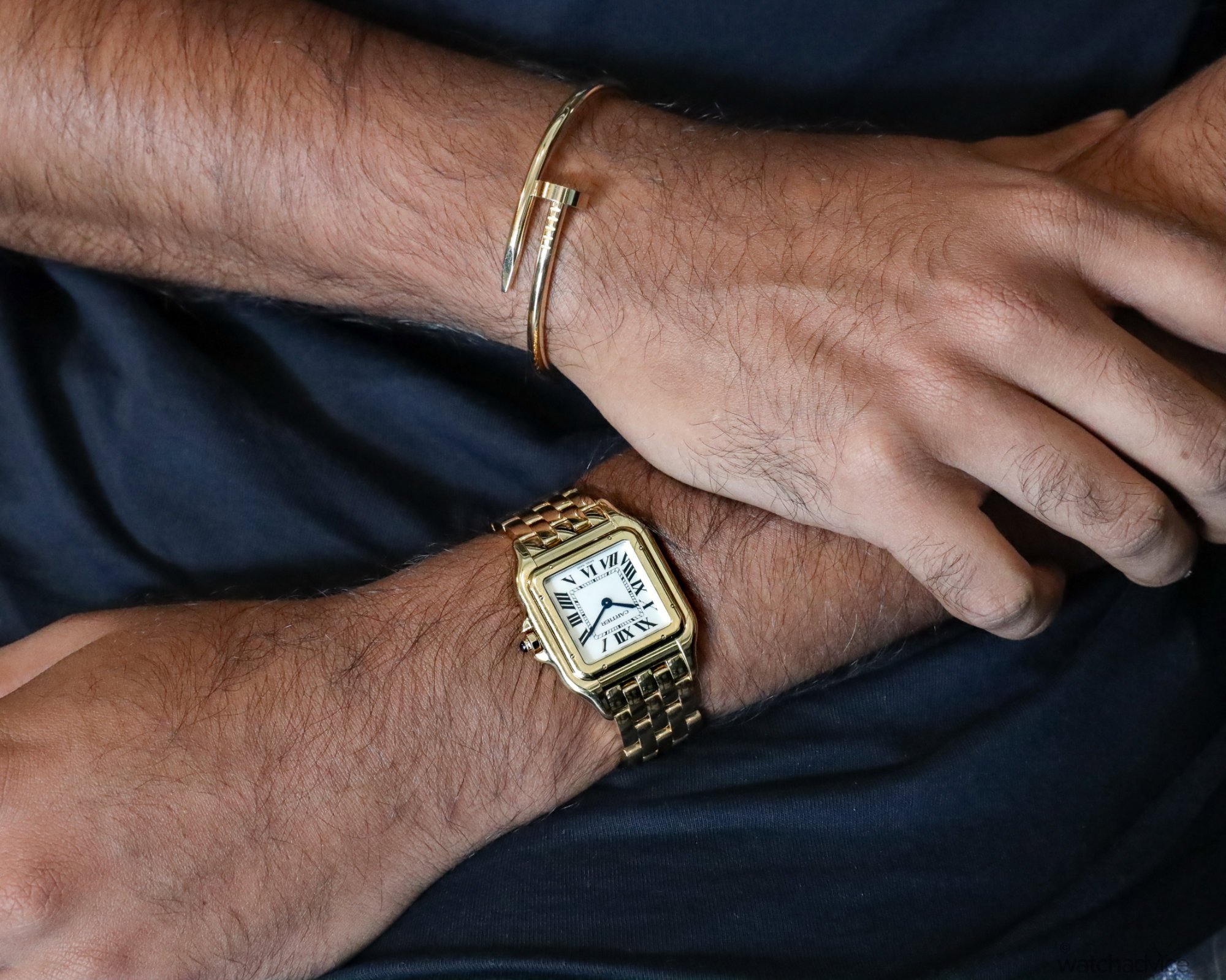
Related Reading: Hands On Review Of The Cartier Panthère de Cartier
The revived Panthère de Cartier collection launched with two case sizes: a 22mm small and a 27mm medium — both offered in the same material options as the 1980s original. This time around, however, Cartier expanded the palette, introducing rose gold as both a full case and two-tone option. The lineup would later grow to include two additional sizes: a remarkably demure 21mm mini version, quietly released alongside the 2017 revival, and a large model — measuring 31mm — announced in September 2024.
Today, the Panthère de Cartier has firmly re-established itself at the top end of the jewellery watch sphere. With modern celebrities like Gwyneth Paltrow and Timothée Chalamet counted among its admirers, the allure of the panther clearly hasn’t faded. A pioneering timepiece reborn as a contemporary force, Cartier has shown that success in haute horlogerie doesn’t always require the loudest statement or the flashiest design. Sometimes, all it takes is a whisper.
Despite its years of absence, the Panthère de Cartier is true to the animal it was named after: quietly poised in the background, waiting for the perfect moment to strike. And by the time it’s noticed, it’s already too late — the watch has claimed the room, and all eyes are on it.
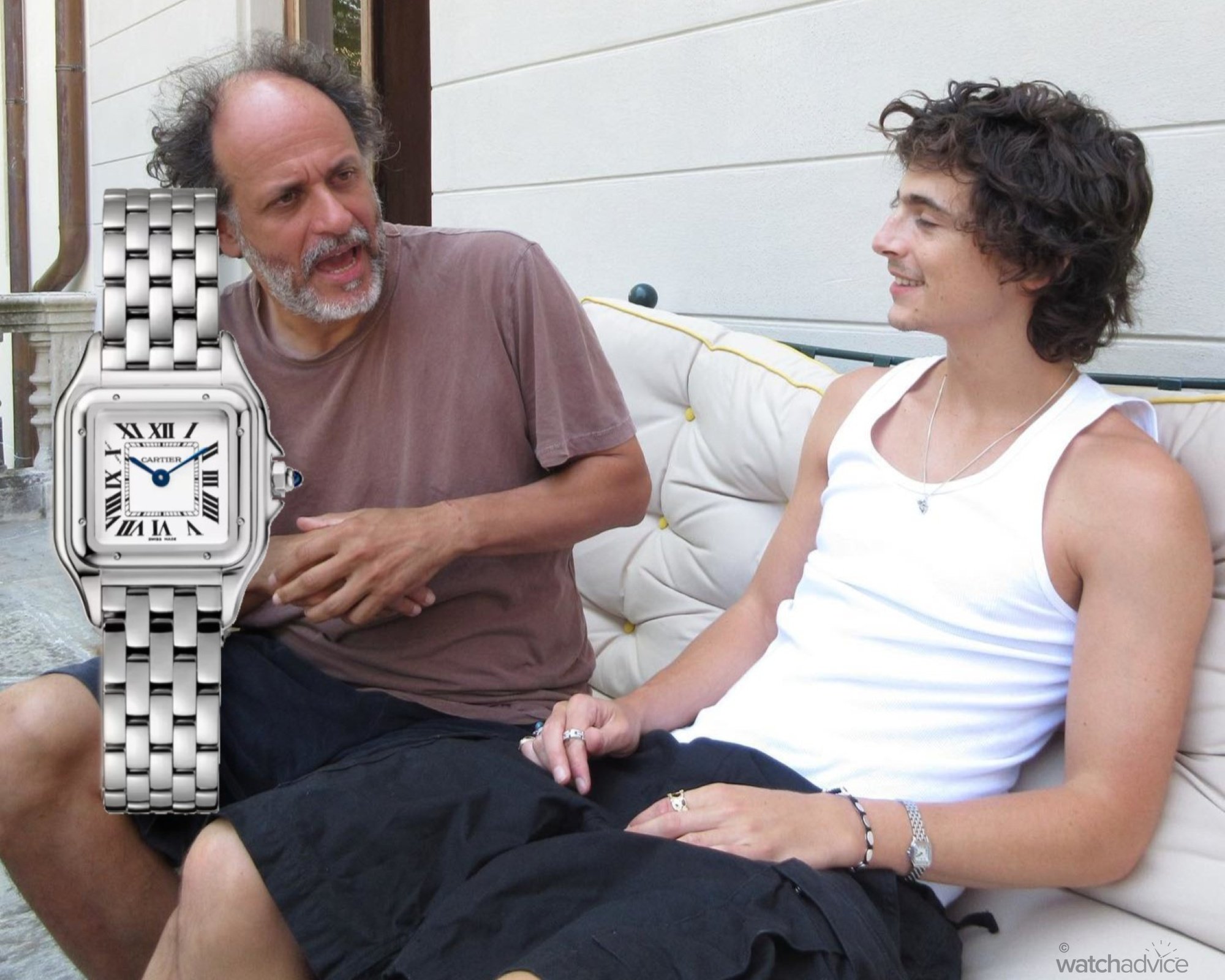
Given its more recent history, it’s difficult to predict what the future truly holds for the Panthère de Cartier. What is clear, however, is that Cartier isn’t finished celebrating its long-awaited return — even nearly a decade on. The brand continues to release updated versions that expand both the variety and the value proposition for future owners.
That’s not to say Cartier hasn’t embraced innovation with the collection either, as demonstrated at Watches & Wonders 2025. This year, they fully leaned into the animalistic inspiration behind the Panthère, unveiling an incredibly unique, bejewelled version of the watch that evoked the stripes of a zebra. So distinct was the piece that it quickly caught the attention of musician Jon Batiste, who wore it to the MET Gala not long after its debut.
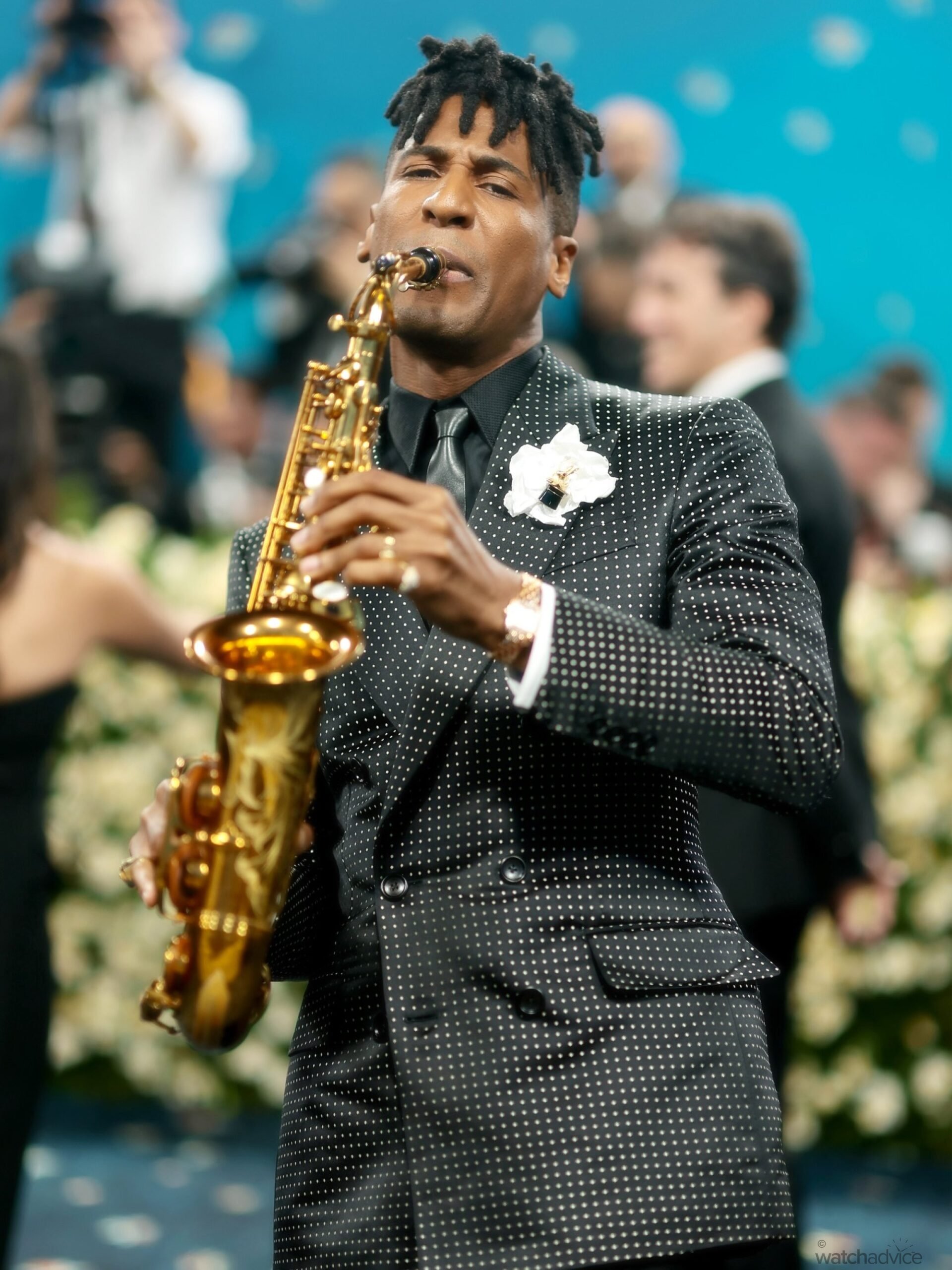
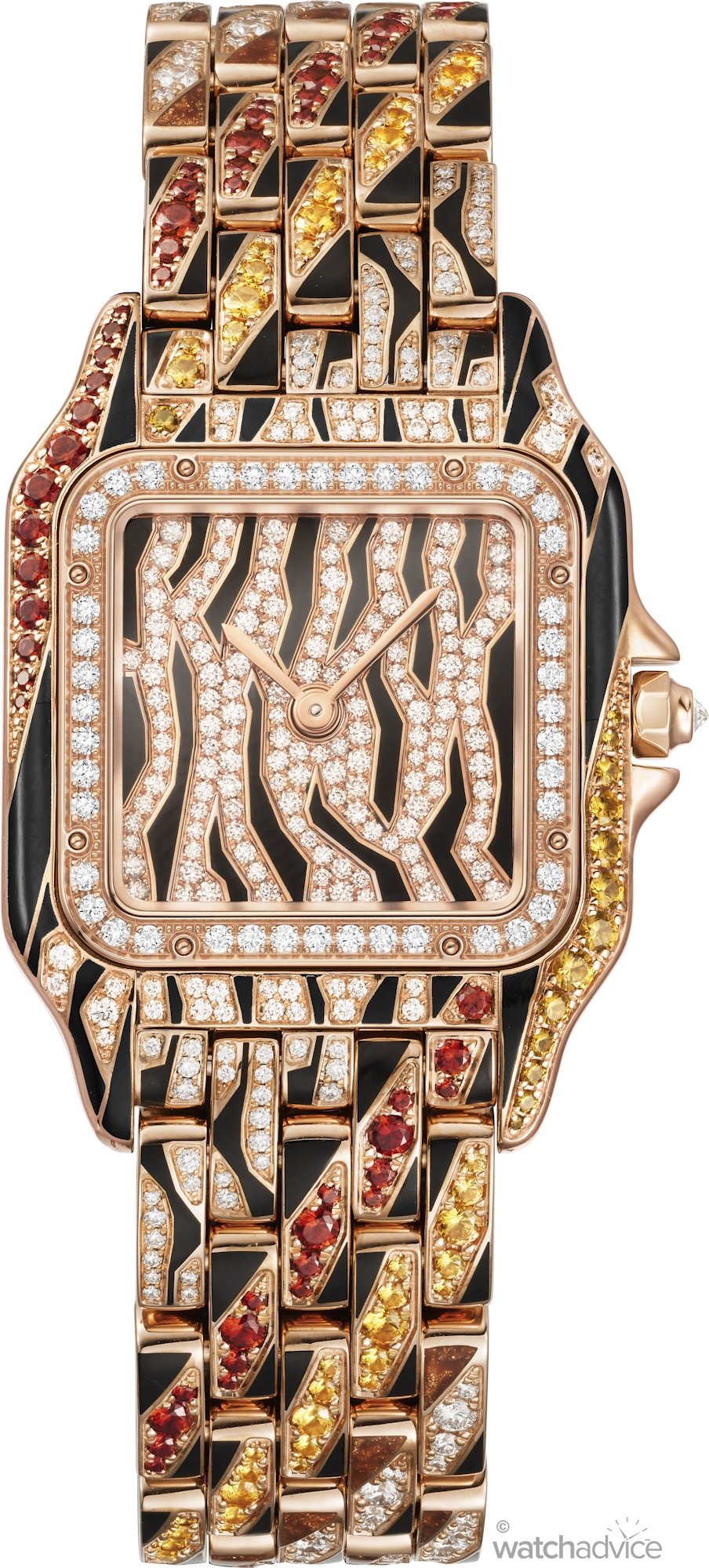
One does wonder, though, just how much more might be waiting in the wings for Panthère de Cartier devotees around the world. Cartier’s guiding ethos of “never imitate, always innovate” remains a powerful force in shaping its horological direction, so it’s only a matter of time before the next stunning evolution of the collection emerges from the manufacture and onto eagerly awaiting wrists. Until then, Panthère de Cartier enthusiasts would be wise to keep a watchful eye on what’s to come. And if you’re not yet a Panthère enthusiast, there’s only one piece of advice worth heeding: start now.
This article was written as part of a commercial partnership with Cartier. Watch Advice has commercial partners that work with us, however, we will never alter our editorial opinion on these pieces, a fact that is clearly communicated to the brands when entering into a commercial arrangement.



